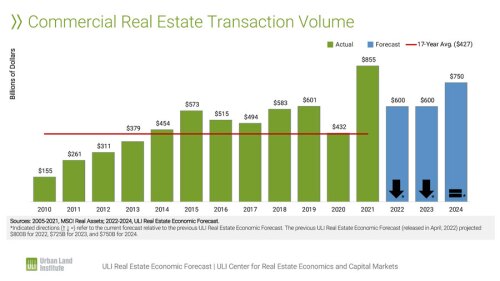As the new appointees at the U.S. Department of Housing and Urban Development (HUD) settle into their roles, they face challenges both old and new: the chronic undersupply of attainable housing in many large U.S. cities, in addition to COVID-related affordability challenges, threatening to subsume both small landlords and renters.
It is in this context that Ethan Handelman, the new deputy assistant secretary of the agency’s Office of Multifamily Housing Programs, addressed the 2021 ULI Housing Opportunity Conference in March, held virtually. Handelman emphasized the importance of the Biden administration’s $1.9 trillion American Rescue Act, which he said will help small landlords and renters meet their housing costs, along with his own office’s priorities like the Rental Administration Demonstration (RAD), which allows housing authorities to tap private capital to fund repairs of public housing.
Although reluctant to touch on issues too far outside his portfolio, Handelman emphasized the ways that HUD’s various wings can reinforce each other’s missions. In his telling, the agency should be seen as a force that can help those who want to do the right thing when it comes to affordable housing, and punish those who resist necessary change.
“[It’s a] combination of enforcement actions and encouragement,” Handelman said. “If a community really [wants to make itself] a good place to live, they are able to do that, have some resources to do it, and an outline for how to do it. For places that want to be closed off, want to not have opportunities, want to try and freeze development and never change, that’s where enforcement comes in more. But you need both approaches.”
Handelman’s position is more concerned with development and management than enforcement. The Office of Multifamily Housing (MFH) administers HUD’s mortgage insurance program, supports loans, and oversees more than 23,000 assisted properties. There are 2.6 million families who live under roofs in Handelman’s portfolio.
Handelman’s presentation opened with an outline of longstanding challenges in staffing that the MFH faces. The number of staff in the office had been falling for decades, under presidents of both parties, reaching a nadir in 2018. In the past two years hiring ticked up, but is still near all-time lows. (HUD overall has half the workers that it did in the early 1990s.) That understaffing proved especially galling last year, as the total volume of loan production skyrocketed during the pandemic, shooting up almost $10 billion from the 2019 level.
“I’m sure you at the local level are feeling some of the effects of the gap between that production level and the staffing level,” said Handelman, who noted that 290 new employees were hired last year, bringing his office’s staff to close to 1,100. But while he anticipated a similar flood of loan production in 2021, Handelman argued that with interest rates at historic lows, these years will probably be the peak and staff doesn’t necessarily need to be brought up to a level to accommodate this volume of activity.
“Last year was a big year, this year is going to be a big year,” Handelman said. “[But] when we staff, we don’t staff for last year, we staff for the long term. We have to manage as an entity that’s open in all environments . . . we have to aim for the high middle.”
Considering the turmoil and strife of the last year, Handelman reports that HUD’s multifamily portfolio is in good shape. At the beginning of 2021, only 159 of 14,700 loans were in default (that is a tad over 1 percent) and there have been no new forbearance agreements since September. Interest rate reductions, meanwhile, have surged 1,000 percent in fiscal year 2020 in comparison to 2019, while new loan applications are double what they were a year ago. The massive federal outlays for social assistance in the last year have helped the office’s work, too, with $800 million in Coronavirus Aid, Relief, and Economic Security (CARES) Act funds going to over 16,600 Section 8 project-based rental assistance contracts to help counteract declines in income and rent.
Handelman also celebrated the effects of the Rental Assistance Demonstration (RAD) project on the remnants of the traditional public housing program, which has seen plummeting federal investment under both Democratic and Republican administrations. RAD brings private capital into the program, giving buildings over to nonprofit or for-profit entities and giving them an incentive to fix up the underinvested buildings. Heavy regulations are meant to ensure that any units demolished are replaced and that the tenants are protected.
There have been 146,000 units of public housing that have gone through the program. Handelman said that if housing authorities had relied on the public housing capital program, it would have taken 34 years to fix what has been upgraded in RAD’s seven years of existence. Higher rent levels for RAD properties were approved at the end of last year, which means that there will be more money for repairs if management companies lock in these levels today, he said.
The ULI audience peppered Handelman with questions after his talk, touching on everything from mandatory parking minimums to affirmatively furthering fair housing rule. In many instances, the deputy undersecretary plead that he had not yet had time to delve into every policy question yet because he had only been in his new position for only a month. But he also made sure to emphasize that America’s pervasive local rules that discourage development, and choke off the housing supply, are a huge problem that nifty fixes like modular housing cannot address on their own.
He also positioned himself, and HUD, outside a debate in the affordable housing community over whether scarce resources should be invested in higher-income areas, to foster integration and opportunity, or in lower-income areas where the bulk of those who need help already live.
“It’s not a question of do we focus all our efforts on places of high opportunity or all our efforts on improving places of less opportunity,” Handelman said. “It’s really about creating more good choices for people. It shouldn’t be the case that the only way to get housing you want is to focus in one particular community that may not be where you grew up, where your kids are, where your job is.”



